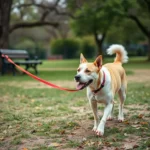
Introduction
Welcoming a new baby into the family is an exciting time, but it can also lead to significant changes in household dynamics. One of the most affected members of the family can be your beloved dog. Dogs are sensitive creatures, and they often experience emotions similar to humans. When a dog feels neglected after a baby arrives, it can lead to distressing behaviors and emotional turmoil. It is essential for pet owners to recognize these feelings and take proactive steps to help their dogs adjust to the new family member.
Understanding your dog’s emotional landscape, the impact of a new baby on family dynamics, and recognizing signs of neglect are crucial aspects of this transition. This article aims to provide pet owners with insights and strategies to ensure that both their dogs and new babies thrive together.
The Emotional Landscape of Dogs
Understanding Dog Emotions
Dogs are complex beings capable of experiencing a range of emotions, from joy to fear and even jealousy. Their emotional depth is often underestimated. The bond between dogs and their owners is profound; they can sense changes in their environment and the emotional states of their human companions. When a new baby arrives, this bond may be tested, leading to feelings of insecurity in dogs.
Signs of Emotional Distress in Dogs
Recognizing when your dog is distressed is crucial. Common signs of emotional distress include:
- Barking or whining: Excessive vocalization can indicate anxiety or frustration.
- Chewing or destructive behavior: Dogs may chew on furniture or toys as a coping mechanism.
- Withdrawal: A previously sociable dog may become more withdrawn and less interested in interaction.
It is vital to differentiate between normal behavioral changes and concerning signs. If your dog’s behavior shifts dramatically, it may be a sign of deeper emotional struggles.
The Impact of a New Baby on Family Dynamics
Changes in Routine
Bringing a baby home alters daily routines significantly. Dogs thrive on predictability, and a sudden change can disrupt their sense of security. Regular walks, feeding times, and play sessions may become irregular, leaving your dog feeling unsettled.
Shift in Attention
The arrival of a new baby demands more attention from parents, often leading to a decrease in the attention given to pets. This shift can make dogs feel sidelined and unappreciated, intensifying feelings of neglect.
Jealousy and Competition for Attention
Dogs can experience jealousy, especially when they perceive a new baby as competition for their owner’s affection. Signs of jealousy can include:
- Pawing at you: Trying to get your attention by nudging or pawing.
- Aggression towards toys: Guarding toys or exhibiting aggressive behavior towards other pets or family members.
- Changes in mood: Becoming more irritable or anxious when the baby is present.
Understanding the psychology behind jealousy can help owners take steps to ease tensions.
Recognizing Signs of Neglect in Dogs
Behavioral Changes
When a dog feels neglected after a baby arrives, it may exhibit various behavioral changes. Common indicators include:
- Increased barking: An attempt to communicate their distress.
- Destructive behavior: Chewing or scratching furniture can signal frustration or anxiety.
- Changes in appetite: A dog may eat less or lose interest in food altogether.
Monitoring these changes is essential, as they can indicate a need for intervention.
Physical Signs of Stress
Physical symptoms can also arise when a dog feels neglected. Watch for signs such as:
- Excessive shedding: Stress can lead to increased shedding.
- Weight loss: A sudden drop in weight may indicate anxiety or a lack of appetite.
- Gastrointestinal issues: Stress can manifest as vomiting or diarrhea.
If these symptoms persist, consult a veterinarian to rule out any underlying medical issues.
Strategies to Help Your Dog Adjust to a New Baby
Preparing Your Dog Before the Baby Arrives
Preparation can significantly ease the transition for your dog. Introduce baby items gradually to help your dog acclimate. Items such as cribs, toys, and even baby clothes can be brought into the home before the baby arrives. Allow your dog to sniff and explore these new items to reduce anxiety.
Gradual exposure to baby sounds, such as recorded crying or cooing, can also help. This exposure can desensitize your dog to the sounds of a newborn, making the eventual arrival less startling.
Creating a Safe Space for Your Dog
Establishing a designated area for your dog is crucial. This space should be comfortable and familiar, providing your dog with a retreat when feeling overwhelmed. Include their bed, favorite toys, and items that carry your scent to create a sense of security.
Incorporating Your Dog into Family Life
Involving your dog in baby-related activities can foster a sense of inclusion and reduce feelings of neglect. Here are some strategies:
- Involve your dog in walks: Take short walks with both your dog and baby in a stroller.
- One-on-one time: Set aside time daily to engage with your dog, whether through play or training sessions.
- Positive reinforcement: Reward your dog for calm behavior around the baby to reinforce positive associations.
Training and Socialization
Continuing training during this transition is essential. Basic commands and socialization help maintain structure and offer mental stimulation. Positive reinforcement techniques can be beneficial, ensuring that your dog feels secure and valued.
Seeking Professional Help
When to Consult a Veterinarian
If your dog shows persistent signs of distress, it may be time to consult a veterinarian. Signs that warrant a visit include:
- Sudden changes in behavior that last for an extended period.
- Physical symptoms such as weight loss or gastrointestinal issues.
- Any aggressive behavior towards the baby or other family members.
A veterinarian can help rule out any medical problems that may be contributing to your dog’s stress.
The Role of Dog Trainers and Behaviorists
Professional dog trainers and behaviorists can provide valuable insights and guidance. They can help tailor training techniques to address specific behavioral issues arising from the new family dynamic. When seeking a professional, consider the following:
- Look for credentials and experience in dealing with family dynamics involving pets.
- Seek recommendations from friends or family or check online reviews.
- Ensure the trainer uses positive reinforcement methods, as these are generally more effective and humane.
Conclusion
Navigating the arrival of a new baby while ensuring your dog feels loved and included can be challenging. The key signs that a dog feels neglected after a baby arrives are often subtle but critical to address. By understanding dog emotions, recognizing behavioral changes, and implementing strategies to incorporate your dog into family life, you can help ease this transition for your furry friend.
Being patient and understanding during this period is essential for maintaining a healthy and happy relationship between your dog and new family members. Remember, with a little extra care and attention, both your dog and baby can thrive together in a loving environment.
FAQs
How long does it take for a dog to adjust to a new baby?
The adjustment period varies by dog. Some may adapt within a few weeks, while others may take months. Consistent attention and reassurance can help shorten this period.
Can dogs feel jealous of babies?
Yes, dogs can experience jealousy. They may feel sidelined by the attention a baby receives, leading to behavioral changes. Ensuring your dog feels included can help mitigate these feelings.
What are the best breeds for families with babies?
While many breeds can adapt well to families with babies, some breeds known for their gentle nature include Labrador Retrievers, Golden Retrievers, and Beagles. Consider each dog’s temperament and energy level to find the best fit for your family.
How can I tell if my dog is unhappy?
Signs of an unhappy dog can include withdrawal, excessive barking, destructive behavior, changes in appetite, and physical symptoms like shedding or weight loss. Monitoring these signs can help you address any issues promptly.









